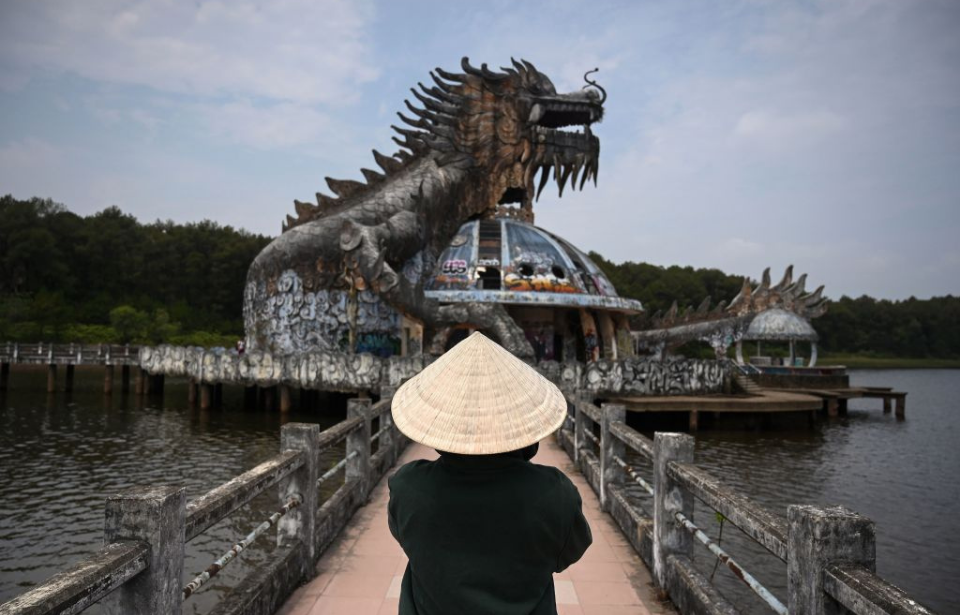Located approximately 10 kilometers from the city center of Huế, Vietnam is the abandoned Hồ Thuỷ Tiên waterpark. Intended to be a popular tourist spot in the jungle, the attraction was shuttered shortly after its opening and has since become the go-to spot for urban explorers, who are drawn to the area by rumors that the location is haunted – and home to crocodiles!
Designed to appeal to the entire family
Spanning nearly 50 hectares, Hồ Thuỷ Tiên was an ambitious project costing $3 million USD to construct. The aim was to have the waterpark appeal to the entire family and, as such, the intention was to build not only amusement rides and water slides, but luxury restaurants, a lake yacht and souvenir shops.
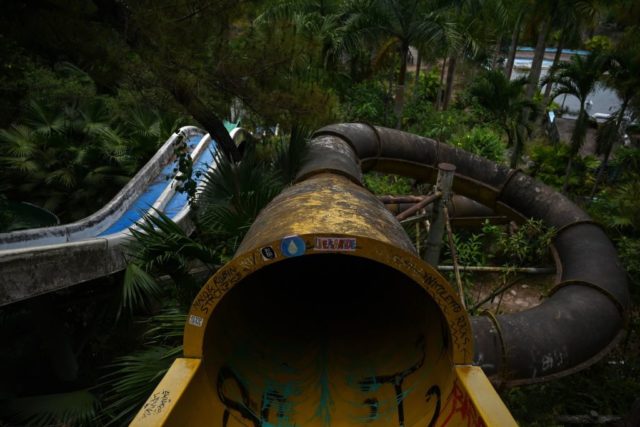
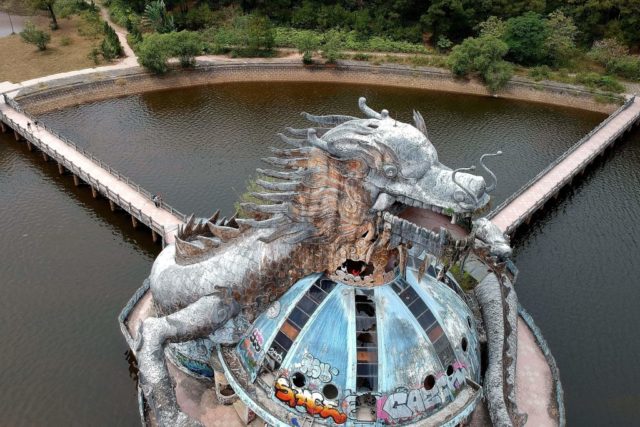
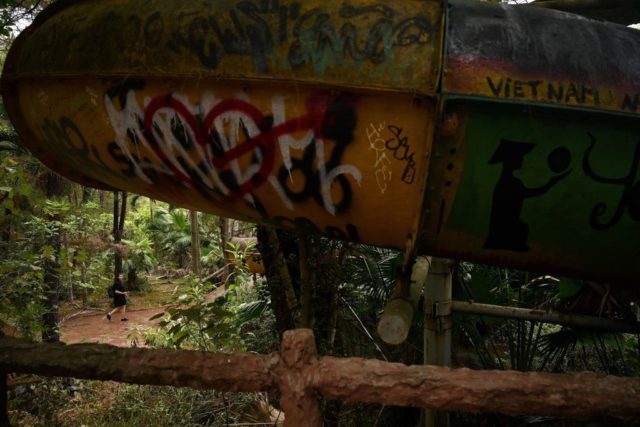
The primary attraction was the three-story-tall aquarium, “protected” by a dragon. Situated in the center of the park, the walls of the interior staircases were lined with images of sharks and manta rays, in a way that resembled the dragon’s ribcage. Within the dragon were tanks filled with both live fish and crocodiles.
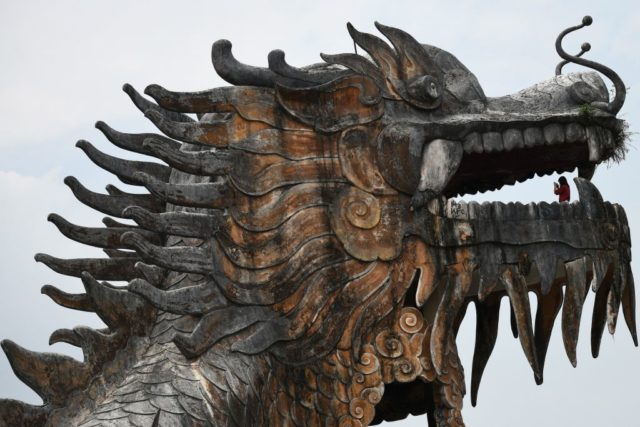
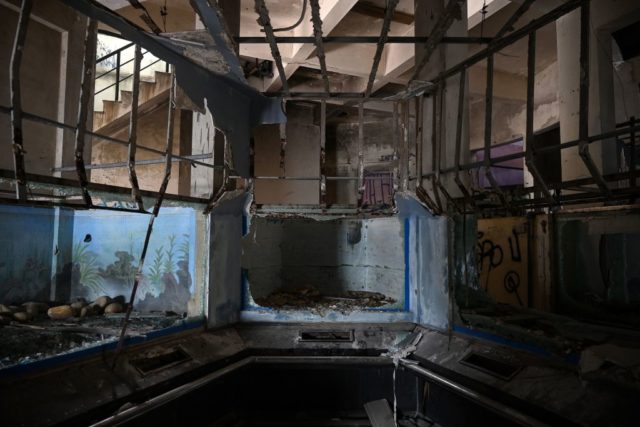
Other attractions were the 2,500-seat amphitheater, which featured a large stage for musical performances, three waterslides, a kids-only pool area located near a playground and group of cubby houses, a cement car, and a village complete with huts. There was even a flight simulator located on the property.
Hồ Thuỷ Tiên’s short-lived run
Hồ Thuỷ Tiên officially opened to the public in 2004, but did so when it was only half-completed. During the height of its operations, visitors were awestruck by the dragon aquarium, but that didn’t stop the waterpark from experiencing issues that led to its closure just a few years after it opened.
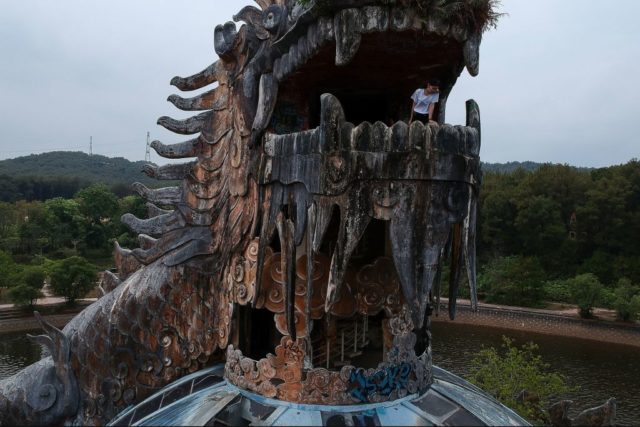
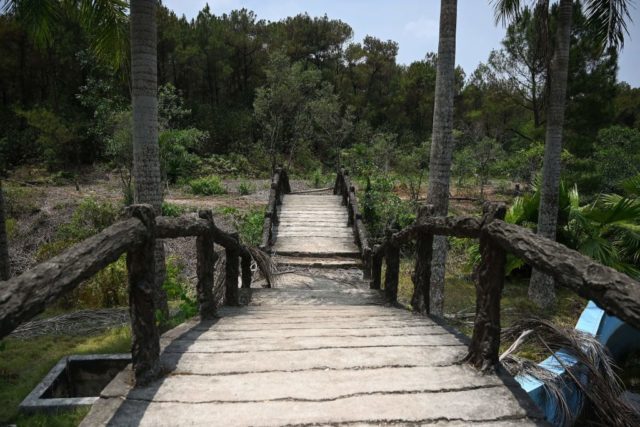
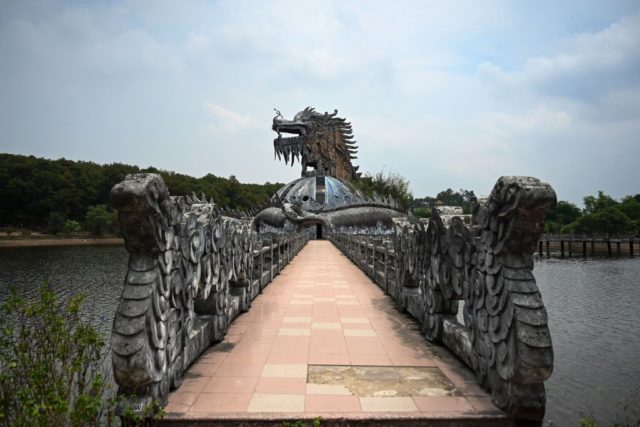
There are many rumors as to why Hồ Thuỷ Tiên shut down. According to locals, its location near the area’s temples, royal tombs and pagodas has made it cursed and haunted. This belief is said to have stopped tourists from visiting the waterpark, making it unprofitable.
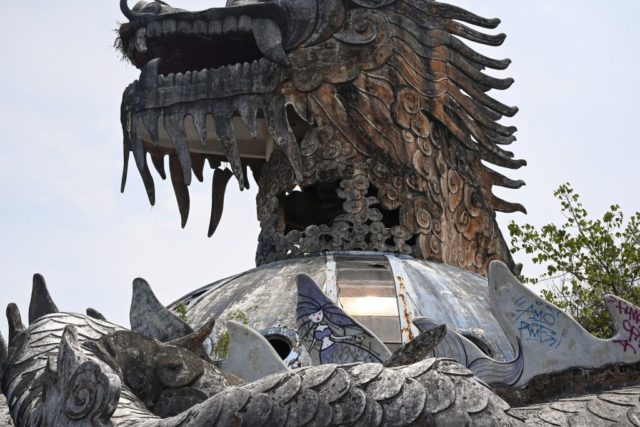
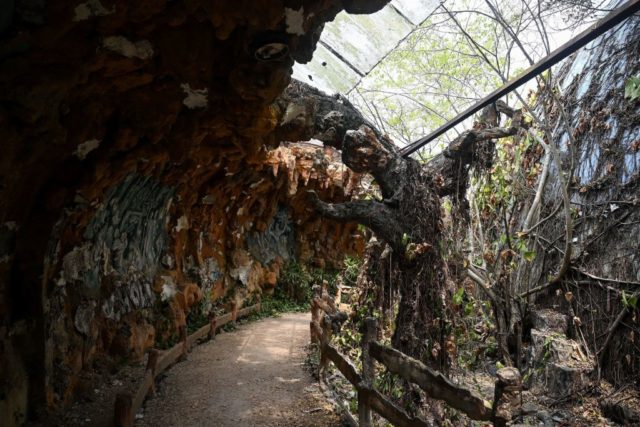
A second theory relates to the area’s mythology, which sees dragons as symbolic. Due to this, it’s said people stopped visiting the park in protest over their belief that a dragon should not be used as a mascot.
The last supposed reason for Hồ Thuỷ Tiên’s closure is also the most likely: that the waterpark was unprofitable because it wasn’t completely finished. As only half of the attractions had been built upon its opening, it’s likely that visitors weren’t able to get the full experience they expected and simply stopped going.
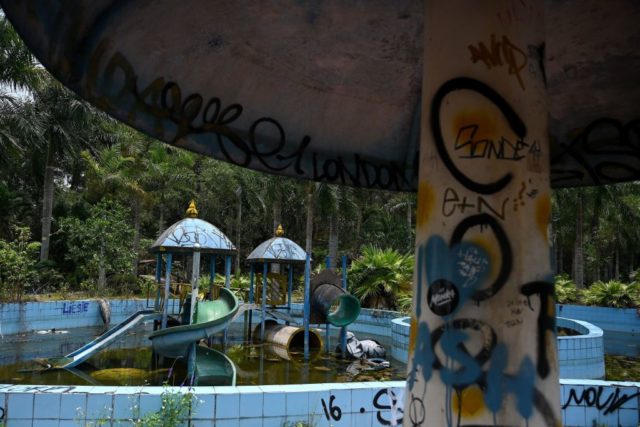
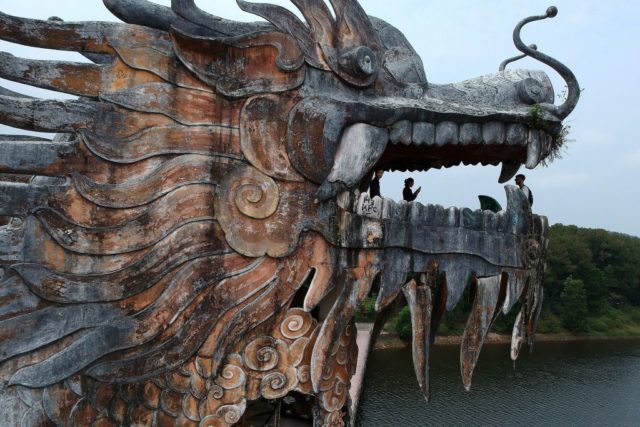
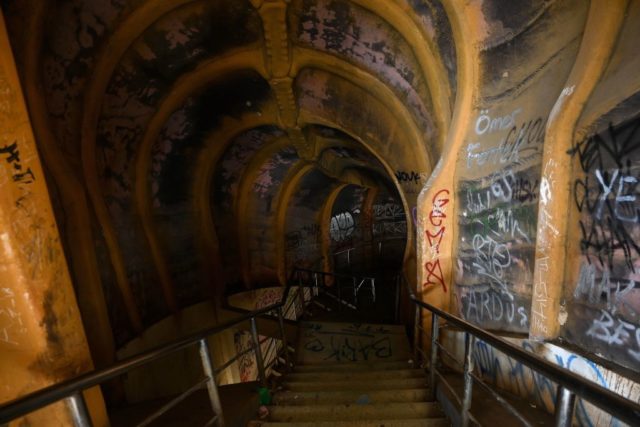
In the years after its closure, ownership of Hồ Thuỷ Tiên was transferred to the HACO Company, with plans to revitalize the waterpark and turn it into an eco-friendly tourist attraction. For reasons that have not been publicly disclosed, these efforts fell through.
Hồ Thuỷ Tiên waterpark, today
Today, Hồ Thuỷ Tiên has largely been swallowed up by the jungle, with the water surrounding the attractions now murky and algae-filled. While abandoned, what may surprise people is that the gate is watched over by a guard who collects an “admission” of around $0.44 USD. There is also a refreshment cart that occasionally operates within the waterpark.
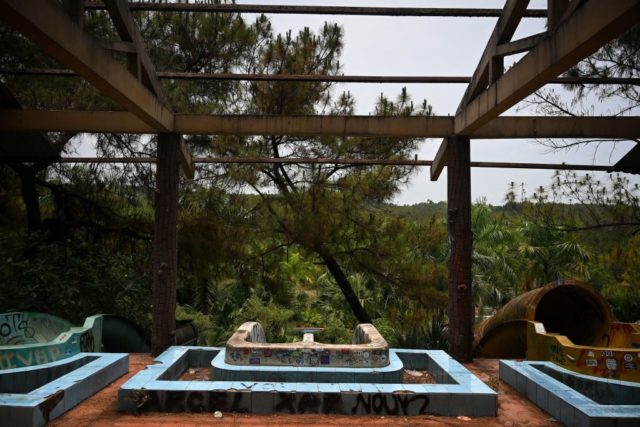
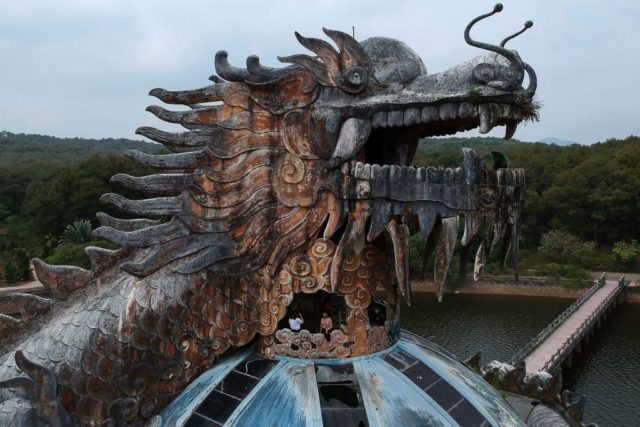
The location is largely covered in weeds, graffiti and vines, giving it a rather eerie feel. The three remaining waterslides are cracked, but are still accessible by stairs built around visitor changing rooms, and while the aquarium tanks were once filled with water, they have since been smashed, with glass lying on the ground.
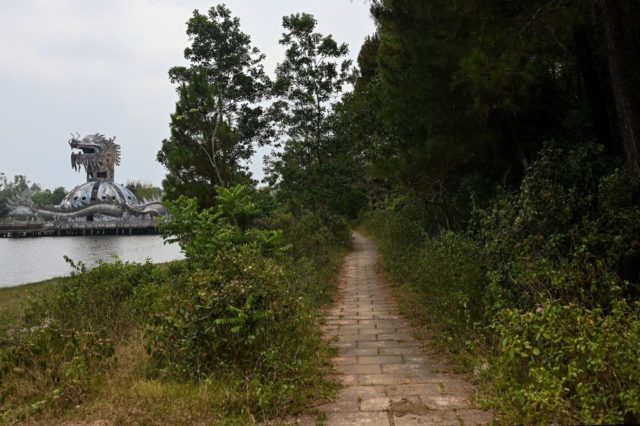
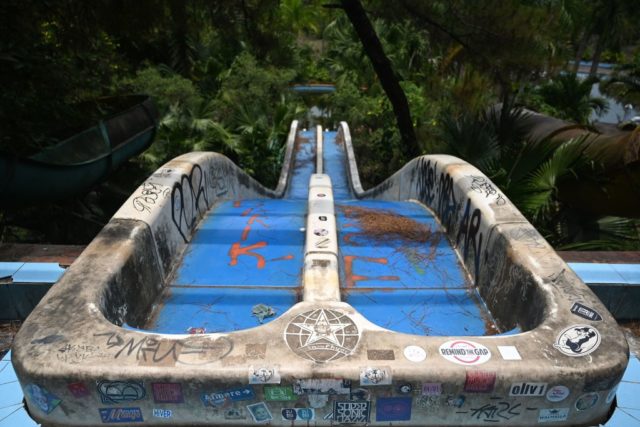
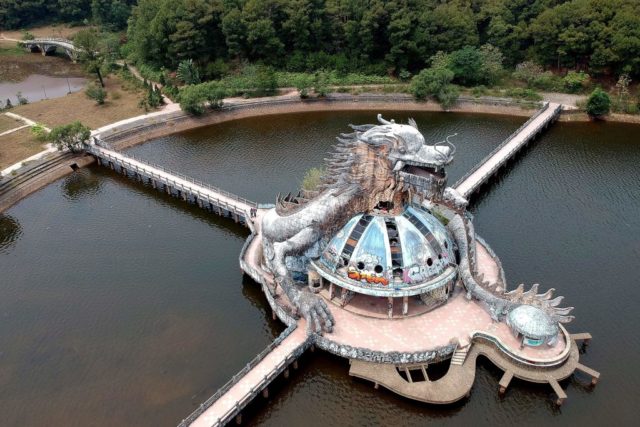
The huts and smaller buildings are still standing, but are derelict, and the flight simulator still has computers in the adjoining room. It’s not the only area to still contain artifacts and remnants of when the waterpark was in operation. As for the amphitheater, it’s still standing, but a large portion of it has caved in.
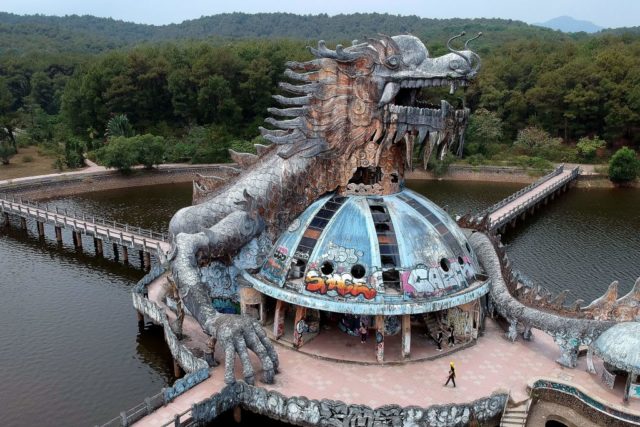
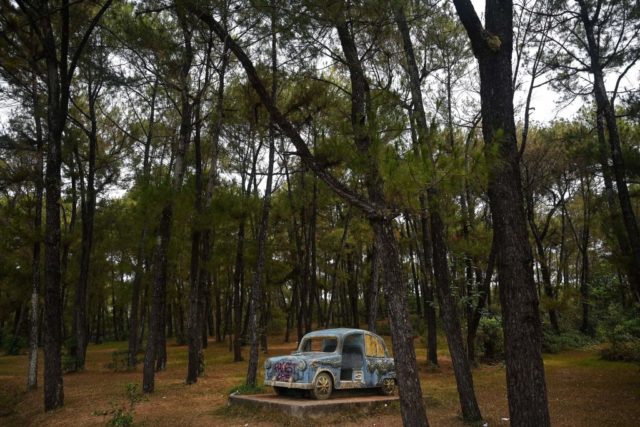
More from us: Seven Terrifying Holes and Pits That Deserve Their Famous Reputations
As for the crocodiles that once inhabited the aquarium, three remained for years in the lake surrounding Hồ Thuỷ Tiên. However, after repeated calls to the World Wildlife Fund (WWF) and the People for the Ethical Treatment of Animals (PETA), the Vietnamese government officially relocated them to a wildlife park.
